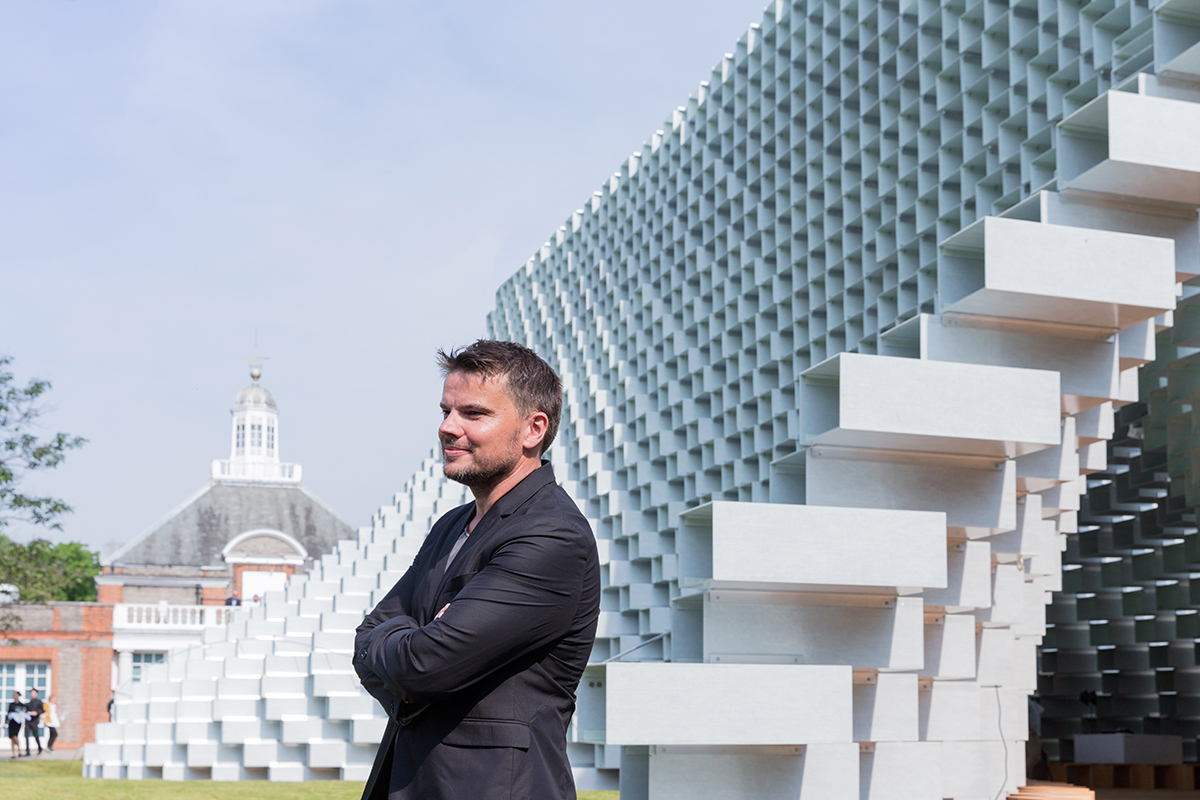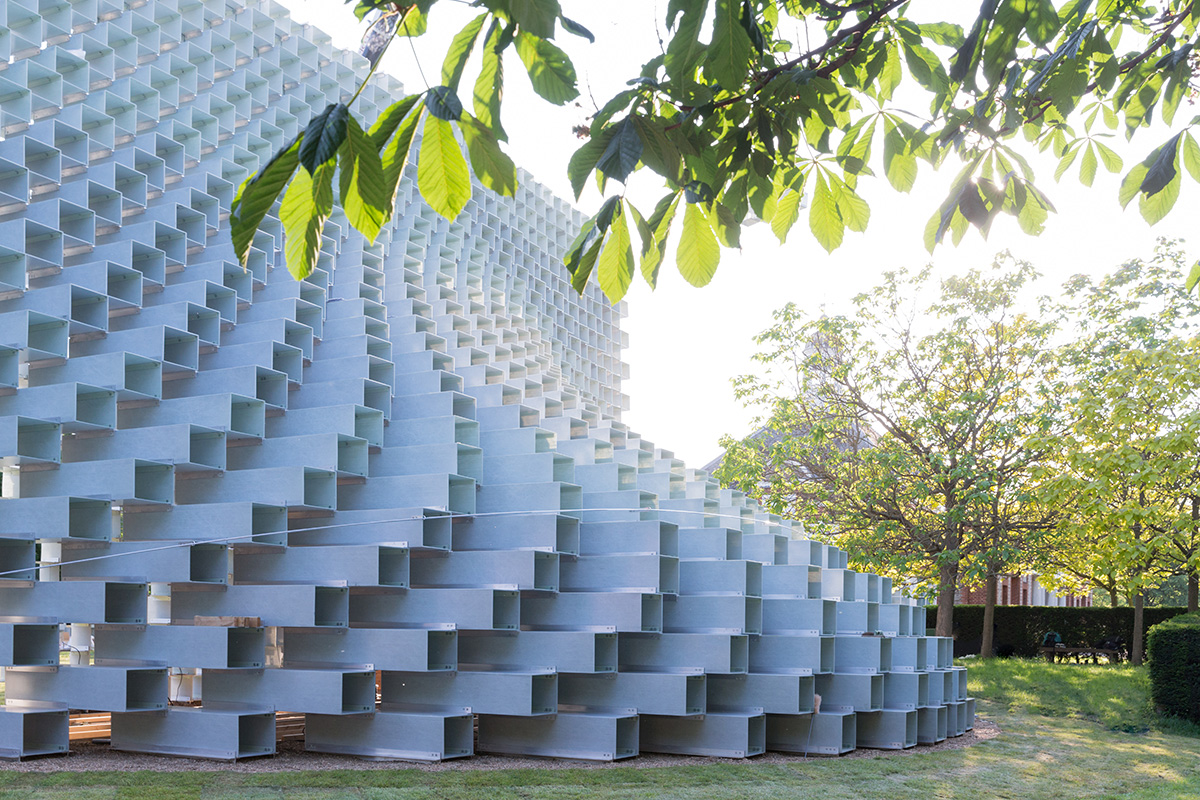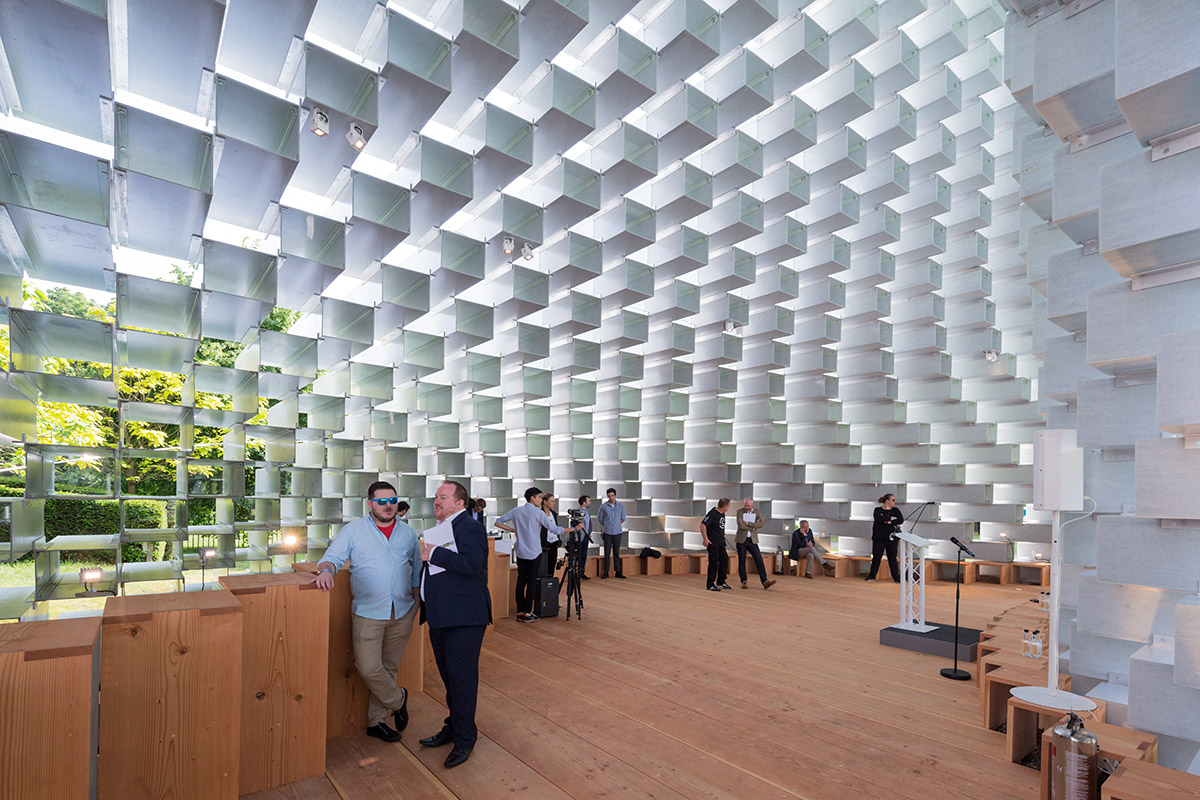Submitted by WA Contents
Bjarke Ingels completed cave-like Serpentine Pavilion transforming the wall into a space
United Kingdom Architecture News - Jun 08, 2016 - 16:17 14512 views

The Serpentine has revealed designs for its expanded Architecture Programme for 2016: the 16th annual Pavilion designed by Bjarke Ingels Group (BIG) and four newly commissioned Summer Houses by Kunlé Adeyemi – NLÉ (Amsterdam/Lagos), Barkow Leibinger (Berlin/New York), Yona Friedman(Paris) and Asif Khan (London). The Summer Houses are inspired by Queen Caroline’s Temple, a classical style summer house built in 1734 and a stone’s throw from the Serpentine Gallery.

Serpentine Pavilion 2016 designed by Bjarke Ingels Group. Image © Iwan Baan
Bjarke Ingel's Serpentine Pavilion shows a clear version of structure that embodies multiple aspects that are often perceived as opposites; a structure that is free-form yet rigorous; modular yet sculptural; both transparent and opaque; both solid box and blob.
Bjarke Ingels loves playing with boxes by combining them for purpose-built spaces, but empty boxes are not enough to create usable spaces -the materiality, colour, shape, size and minimum technology are the basic elements of creating a functional and aesthetic architectural space. Bjarke does that very well.

Bjarke Ingels at the opening of Serpentine Pavilion. Image © Iwan Baan
For the Serpentine Pavilion 2016, Bjarke Ingels worked with one of the most basic elements of architecture: the brick wall. Rather than clay bricks and or stone blocks, however, Ingel's wall is erected from pultruded fibreglass frames stacked on top of each other. The wall is then pulled apart to form a cavity within it, to house the events of the Pavilion's programme. Titled 'the unzipping of the wall', the wall turns the line into a surface, transforming the wall into a space.
''A complex three-dimensional environment is reared that can be explored and experienced in a variety of ways, inside and outside. At the top, the wall appears like a straight line, while the bottom of it forms a sheltered valley at the entrance of the Pavilion and an undulating hillside towards the Park'' explains Bjarke Ingels in his design description.

The wall presents an undulating form creating different perspective for visitors. Image © Iwan Baan
The unzipped wall creates a cave-like canyon lit through the fibreglass frames and the gaps between the shifted boxes, as well as through the translucent resin of the fiberglass. As a result, the shifting overlaps as wells the movement and presence of people outside create a lively play of light and shadow on the cave walls within.
The materials used for 'unzipped wall' include wooden floors and extruded fiberline profiles, providing every surface with a warm glow and linear texture-from the mesh of woven glass fibres to the undulating lines of the grain of the wood.

Interior view of the pavilion creates more transparent space because of the position of the boxes, and pure, clear and curvilinear surfaces inside. Image © Iwan Baan
Ingel's simple manipulation of the archetypal space-defining garden wall creates a presence in the Park that changes as you move around it and as you move through it. The North-South elevation of the Pavilion is a perfect rectangle. The East-West elevation is an undulating sculptural silhouette. Towards the East-West, the Pavilion is completely opaque and material. Towards the North-South, it is entirely transparent and practically immaterial. Thus, presence becomes absence, orthogonal becomes curvilinear, structure becomes gesture, and box becomes blob.
The Serpentine's Pavilion commission, conceived in 2000 by Director Julia Peyton-Jones, has become an international site for architectural experimentation and has presented projects by some of the world's greatest architects. Each Pavilion is sited on the Serpentine Gallery's lawn for four months and the immediacy of the commission – taking a maximum of six months from invitation to completion – provides a unique model worldwide.
The selection of the architects, chosen for consistently extending the boundaries of architecture practice, is led by the Serpentine’s core curatorial thinking, introducing contemporary artists and architects to a wider audience. The brief is to design a 300-square-metre Pavilion that is used as a café by day and a forum for learning, debate and entertainment at night. Serpentine Galleries will be partnering with Harrods for the 2016 Pavilion Café.
The Serpentine Pavilion is one of the top-ten most visited architectural and design exhibitions in the world. There is no budget for the project, it is realised through sponsorship, help-in-kind support and the sale of the Pavilion.
The Serpentine Summer Houses are open to view from today and the Serpentine Pavilion from Friday 10 June to 9 Oct 2016. Today, Bjarke Ingels, Kunlé Adeyemi, Frank Barkow and Regine Leibinger, Yona Friedman and Asif Khan will discuss their designs for the 2016 Pavilion and Summer Houses with Julia Peyton-Jones and Hans Ulrich Obrist, in a series of panels moderated by Vicky Richardson as part of Park Nights Prelude: Serpentine Architecture Programme Conversations will now take place at The Royal Geographical Society, 12 noon!
The event venue: The Royal Geographical Society, 1 Kensington Gore, SW7 2AR, (entrance from the top of Exhibition Road), 5 minutes' walk from the Serpentine Gallery.
Top image © Iwan Baan
> via Serpentine Galleries
